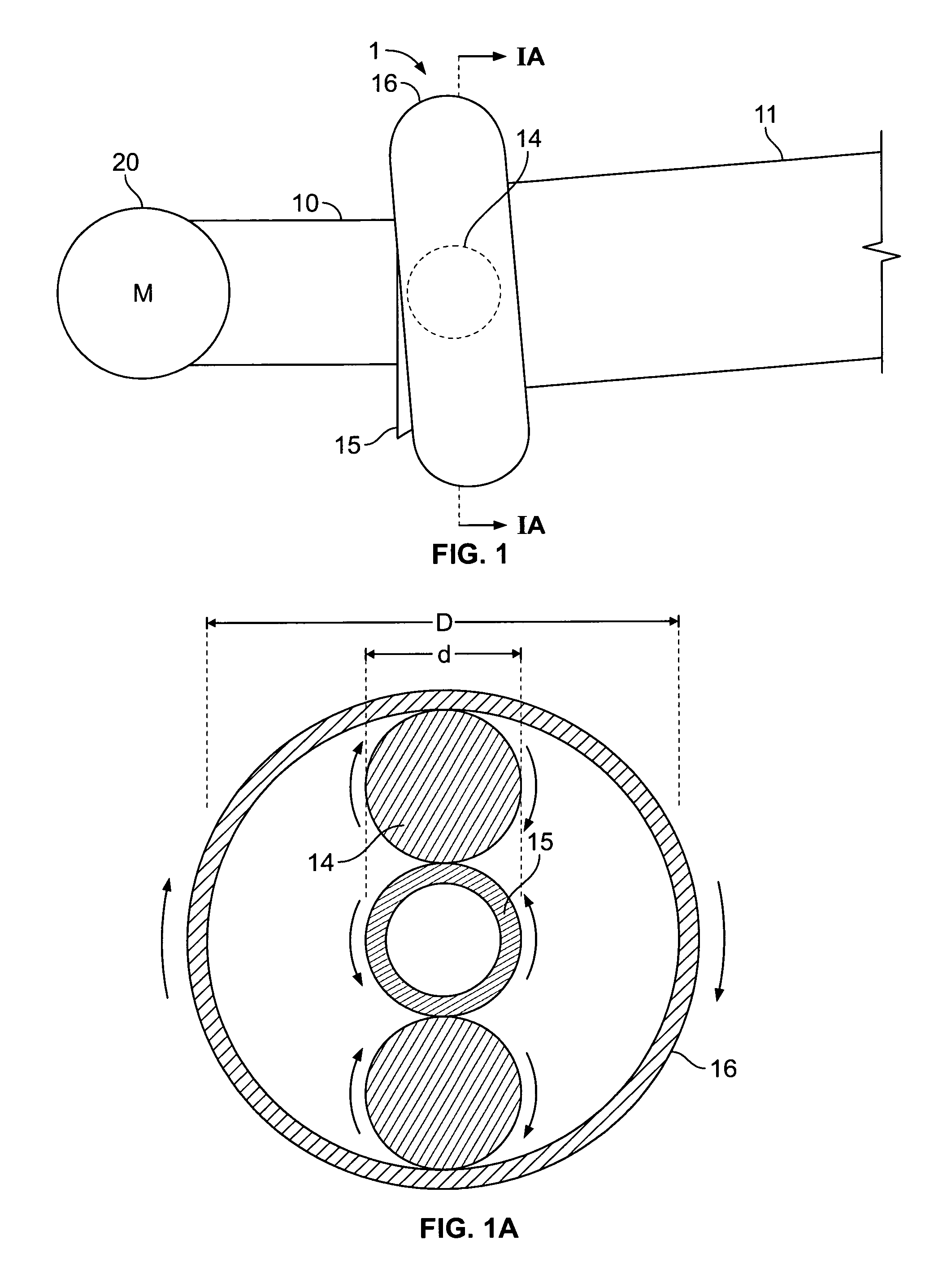Gearless speed reducer or increaser
a technology of speed reducer and increaser, which is applied in the direction of yielding coupling, friction gearing, gearing, etc., can solve the problems of inability to precisely machine gears, inability to accurately machine shafts, and inability to achieve optimal use of traditional gear-based speed reducers, so as to prevent any slippage of balls
- Summary
- Abstract
- Description
- Claims
- Application Information
AI Technical Summary
Benefits of technology
Problems solved by technology
Method used
Image
Examples
Embodiment Construction
Referring now in detail to the drawings, FIG. 1 shows a top view of the transmission arrangement according to one embodiment of the invention. The transmission arrangement 1 comprises an input shaft 10, connected to an inner race 15, and an output shaft 11, connected to an outer race 16. Between the two races are two ball bearings 14, shown in dotted lines in this view. A motor 20 is connected to input shaft 10. Inner race 15 is disposed angularly offset to outer race 16, so that ball bearings 14 are held in a pocket between the races with no play. The offset occurs by pivoting one of the races around the y-axis shown in FIGS. 2-3. The degree of offset required to hold the balls depends on the curvature of the raceways, the size of the balls, and the amount of play of the balls in the races prior to being offset. This pivoting creates a pocket to accommodate the balls, and reduces the clearance on both sides of each ball 14 to eliminate the ability for the ball to slide along the ra...
PUM
 Login to View More
Login to View More Abstract
Description
Claims
Application Information
 Login to View More
Login to View More - R&D
- Intellectual Property
- Life Sciences
- Materials
- Tech Scout
- Unparalleled Data Quality
- Higher Quality Content
- 60% Fewer Hallucinations
Browse by: Latest US Patents, China's latest patents, Technical Efficacy Thesaurus, Application Domain, Technology Topic, Popular Technical Reports.
© 2025 PatSnap. All rights reserved.Legal|Privacy policy|Modern Slavery Act Transparency Statement|Sitemap|About US| Contact US: help@patsnap.com



